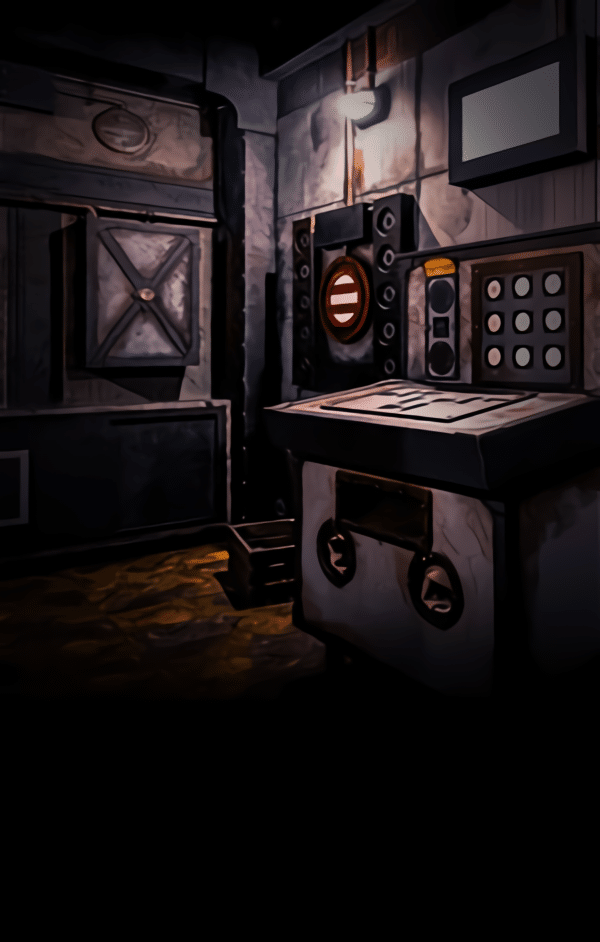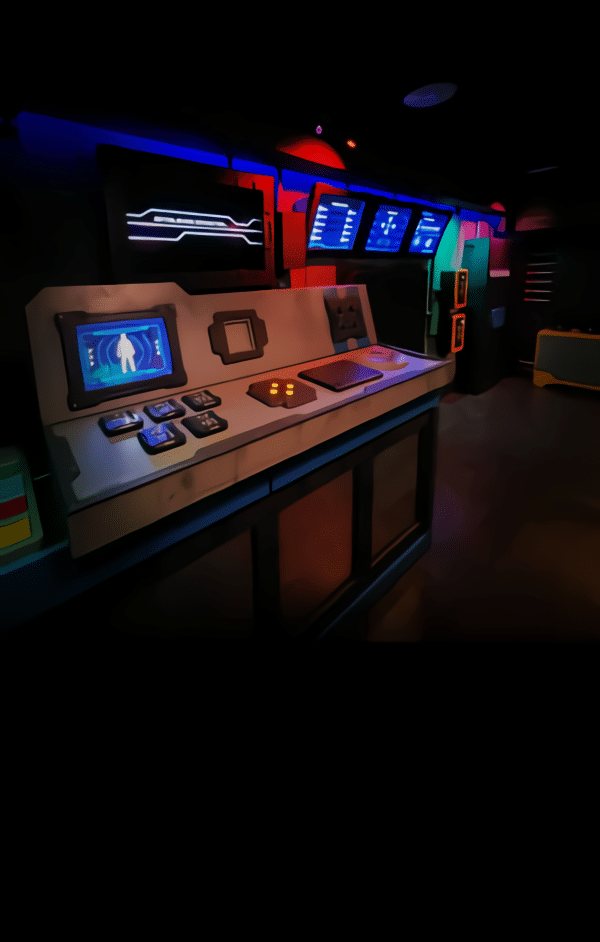Understanding the Difference Between Physical Escape Rooms and VR Escape Adventures
Escape rooms have become one of the most exciting and immersive entertainment options in New York City. From cinematic sets and complex puzzles to atmospheric storytelling and real-time teamwork, physical escape rooms offer an unmatched interactive adventure. But with the rise of virtual reality technology, VR escape experiences have become increasingly popular as well. This leads many players to ask: “How do escape rooms NYC compare to VR-based escape experiences?”
Why Players Explore the Difference Between Escape Rooms NYC and VR Escape Adventures
As players begin researching options through this link — escape rooms nyc — they see a mix of physical rooms, hybrid experiences, and virtual reality escape games offered around the city. VR technology has expanded the world of escape rooms, allowing people to explore computer-generated environments, fantasy worlds, and impossible scenarios. Meanwhile, physical escape rooms—like those at Mission Escape Games—continue to deliver tactile, real-world puzzle experiences that VR cannot fully replicate.
Both experiences offer unique strengths, but they differ significantly in immersion style, puzzle interaction, teamwork dynamics, physical movement, storytelling depth, and sensory engagement. This article dives deep into how traditional escape rooms in NYC compare to VR escape games so players can understand the benefits, limitations, and ideal use cases for each.
How Do Escape Rooms NYC Compare to VR-Based Escape Experiences?
Physical escape rooms NYC and VR-based escape experiences both offer exciting and immersive adventures—but in very different ways. Physical escape rooms emphasize real-world interaction, tangible puzzles, and cinematic environments, while VR escape rooms use virtual worlds, digital interactions, and technology-driven scenarios to create gameplay environments that would be impossible to build physically.
Players often choose based on preference, group dynamic, accessibility, and the type of challenge they enjoy most. Mission Escape Games specializes in physical, puzzle-engineered escape rooms that maximize realism and tactile interaction—offering an IRL experience VR cannot duplicate.
Below is a full breakdown of how the two compare across all major categories.
H2: Immersion in Escape Rooms NYC vs. VR Escape Adventures
Physical Immersion in NYC Escape Rooms
Physical escape rooms rely on real-world props, physical puzzles, sound design, scenery, and tactile interaction to immerse players. Walls, furniture, locks, hidden compartments, lighting, and sensory elements make the environment feel real.
Key Immersion Features
-
Real props and set design
-
Physical movement and exploration
-
Sound, lighting, and atmospheric effects
-
Multi-room environments
-
Tangible puzzle-solving
-
Human interaction with game masters
Players feel physically inside the story.
VR Immersion
VR escape rooms rely on digital animation, headsets, and controllers to create virtual worlds.
VR Immersion Features
-
3D digital environments
-
Virtual physics and mechanics
-
Fantasy or sci-fi worlds not possible in real life
-
Full 360-degree visuals
-
Computer-generated interaction
While visually stunning, VR immersion is entirely digital and lacks the tactile realism of physical rooms.
H2: Puzzle Interaction Differences Between Escape Rooms NYC and VR Games
Physical Puzzle Interaction
In NYC escape rooms, puzzles are hands-on.
Physical Puzzle Types
-
Locks and keys
-
Switches and levers
-
Mechanical puzzles
-
Hidden drawers and compartments
-
Weighted triggers
-
Pattern recognition on real surfaces
-
Multi-step logic puzzles involving physical objects
Players manipulate real objects, which boosts immersion.
VR Puzzle Interaction
In VR, puzzles rely on digital mechanics.
VR Puzzle Types
-
Virtual switches and levers
-
Physics-based puzzles
-
Teleportation or gravity puzzles
-
Digitally triggered events
-
Touchless interaction through controllers
Fun and creative, but lacks the physical satisfaction of manipulating real objects.
H2: Storytelling Approaches
Storytelling in Physical Escape Rooms NYC
Narratives unfold through physical clues, environmental storytelling, sound cues, and direct interactions.
Features of Physical Storytelling
-
Props and décor reveal story details
-
Hidden notes or messages deepen lore
-
Narrative progression through room transitions
-
Live or recorded voiceover narration
-
Real environmental effects
The story feels grounded—players literally stand inside the plot.
Storytelling in VR Escape Rooms
Stories unfold visually and digitally.
VR Storytelling Features
-
Cutscenes
-
Animated sequences
-
Virtual characters
-
Environmental art
-
Digital text or prompts
VR creates imaginative stories, but players may feel more like observers than participants.
H2: Movement and Physical Engagement
Movement in Escape Rooms NYC
Players move through real rooms.
Physical Engagement
-
Walking, searching, climbing (when allowed)
-
Using hands to manipulate objects
-
Exploring multiple chambers
-
Moving furniture or props (as permitted)
This physicality contributes to realism.
Movement in VR Escape Rooms
VR restricts real movement due to safety and hardware.
VR Movement
-
Teleporting digitally
-
Minor walking inside safe zones
-
Controller-based navigation
-
Limited physical interaction
Movement feels more simulated than real.
H2: Teamwork Dynamics: Physical vs. VR Escape Rooms
Teamwork in Traditional Escape Rooms
Physical rooms require close collaboration.
Teamwork Features
-
Real-world communication
-
Sharing physical objects
-
Splitting up to solve puzzles
-
Multi-person mechanisms
-
Body-language communication
This fosters stronger social interaction.
Teamwork in VR Experiences
Teams work together digitally.
VR Teamwork Features
-
Voice chat communication
-
Collaborative digital tasks
-
Shared virtual environments
-
Avatar-based movement
Still effective, but less natural than face-to-face interaction.
H2: Sensory Experience Comparison
Sensory Depth in NYC Escape Rooms
Physical escape rooms incorporate:
-
Real textures
-
Atmospheric lighting
-
Sound effects
-
Temperature changes
-
Physical props
-
Hidden compartments
This multi-sensory experience makes the adventure feel alive.
Sensory Depth in VR Escape Games
VR simulates sensations visually and aurally:
-
3D audio
-
Visual animations
-
Haptic feedback (controller vibration)
But physical sensory realism is limited to the VR hardware.
H2: Difficulty Levels in Escape Rooms NYC vs. VR Experiences
Physical Room Difficulty
Difficulty comes from:
-
Logical complexity
-
Puzzle density
-
Multi-room design
-
Time management
-
Physical searching
-
Pattern recognition
Puzzle lovers often prefer physical rooms.
VR Difficulty
Difficulty comes from digital mechanics:
-
Virtual physics
-
Puzzle sequencing
-
Time pressure
-
Coordination with VR controls
VR difficulty depends on comfort with technology as well as puzzle structure.
H2: Accessibility and Player Comfort
Physical Escape Room Accessibility
Some players prefer real rooms because they avoid:
-
Motion sickness
-
VR goggle discomfort
-
Eye strain
Physical rooms also offer better accessibility for group members who want tangible experiences.
VR Accessibility
VR requires:
-
Wearing a headset
-
Comfort with digital displays
-
Understanding VR controls
Not ideal for individuals who experience dizziness or claustrophobia.
H2: Replay Value: Escape Rooms NYC vs. VR
Physical Escape Rooms
Escape rooms are mostly one-time experiences, because once you know the solutions, you cannot replay meaningfully.
VR Escape Rooms
VR rooms may offer:
-
Multiple modes
-
Randomized puzzle elements
-
Difficulty variations
Still, most VR escape games also have limited replay value.
H2: Technology Use and Limitations
Physical Rooms
Use practical effects, mechanics, sensors, and props.
Pros
-
Reliable
-
Strong immersion
-
No hardware malfunctions from users
Cons
-
Wear and tear over time
VR Rooms
Use advanced graphics engines and headsets.
Pros
-
Unlimited visual possibilities
-
Easy updates
Cons
-
Tech malfunctions possible
-
Headset glitches
-
Hardware maintenance required
H2: Realism vs. Fantasy
Realism in NYC Escape Rooms
Physical rooms feel real because they are real.
Realistic Themes Include
-
Detective mysteries
-
Spy missions
-
Ancient temples
-
Bank heists
-
Prison escapes
-
Secret labs
Real-world environments enhance immersion.
Fantasy in VR
VR thrives in fantasy worlds.
Fantasy VR Themes
-
Space exploration
-
Magical realms
-
Post-apocalyptic cities
-
Underwater adventures
-
Gravity-defying environments
VR is best for experiences impossible to build physically.
H2: Cost Comparison
Physical Escape Rooms NYC
-
Typically $35–$50 per player
-
Includes real sets, puzzles, and staff support
VR Escape Rooms
-
Often similar or slightly higher in cost
-
Technology investment raises prices
Both offer value but serve different entertainment purposes.
H2: Skill Requirements
Skills Needed for Traditional Escape Rooms
-
Logic
-
Pattern recognition
-
Communication
-
Real-world problem solving
-
Spatial awareness
Skills Needed for VR Escape Rooms
-
Hand-eye coordination
-
Comfort with VR controls
-
Quick adaptation to virtual mechanics
Puzzle lovers tend to prefer physical rooms for intellectual challenge.
H2: Social Experience Comparison
Physical Rooms: Best for Social Interaction
Players share a physical space, creating:
-
Shared laughter
-
Group energy
-
Real-time reactions
-
Team bonding
VR Rooms: Fun but Less Social
Players may feel more isolated due to headsets.
H2: Which Option Is Better for Beginners?
Beginners Often Prefer Physical Rooms Because:
-
Intuitive puzzle design
-
Natural communication
-
Tactile interaction
-
Simpler learning curve
VR Requires Beginners to Learn:
-
Headset navigation
-
Virtual controls
-
Movement limitations
Physical rooms are more welcoming for first-timers.
H2: Which Option Is Better for Puzzle Enthusiasts?
Physical Rooms Win
Puzzle depth, multi-layer logic, and tactile puzzle engineering make NYC escape rooms ideal for enthusiasts.
VR Rooms Appeal to Those Who Prefer:
-
Visual storytelling
-
Fantasy environments
-
Tech-driven gameplay
Puzzle lovers typically favor physical escape rooms.
Detailed Conclusion
Physical escape rooms NYC and VR-based escape experiences both offer thrilling, immersive, and memorable adventures—but they differ significantly in execution, puzzle style, interaction, storytelling, teamwork, and sensory depth.
Physical escape rooms, like those at Mission Escape Games, provide a tactile, cinematic, and hands-on experience that VR simply cannot replicate. From real props to multi-room exploration and strong social connection, physical escape rooms remain the gold standard for puzzle enthusiasts, groups, corporate teams, and anyone seeking an authentic adventure.
VR escape rooms offer unique advantages too, including impossible worlds, gravity-defying mechanics, and animated storytelling, but they lack the physical realism, natural teamwork dynamics, and tactile puzzle-solving that define traditional escape rooms.
Ultimately, the “best” choice depends on the type of experience you want, but for most players—especially first-timers and puzzle lovers—physical escape rooms in NYC deliver a deeper, more satisfying, and more immersive experience. Mission Escape Games remains one of the leading destinations for those seeking world-class escape room adventures in New York City.
FAQs
1. Are VR escape rooms similar to physical escape rooms?
VR escape rooms offer digital environments and mechanics, while physical escape rooms use real props and tactile puzzles. Both are immersive but in very different ways.
2. Which offers deeper puzzles: VR or physical escape rooms?
Physical escape rooms typically offer more complex, tactile, and multi-layered puzzles ideal for puzzle lovers.
3. Do escape rooms NYC provide both physical and VR options?
Some venues do, but Mission Escape Games specializes in high-quality physical rooms that maximize real-world immersion.
4. Are VR escape rooms better for beginners?
Usually no—beginners often find physical rooms more intuitive and comfortable, while VR requires adjustment to controls and movement.
5. Which is more immersive overall?
Physical escape rooms provide stronger realism and tactile engagement, while VR offers immersive fantasy environments. The “best” depends on personal preference.
Read: Do escape rooms NYC offer rooms specifically built for advanced problem solvers?
Read: What should I know about challenge pacing in escape rooms NYC?









